Search Images
Browse Content (p. 1664)
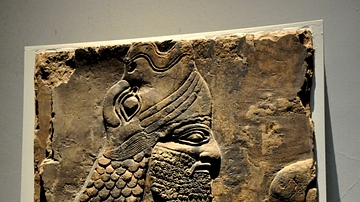
Image
Apkallu wearing a fish cloak
This protective spirit (Apkallu or Abkallu) guarded the entrance to the temple of Ninurta at Nimrud. A fish's head can be seen on Apkallu's head, and its skin hangs down over the back of Apkallu's body. Neo-Assyrian era, 865-860 BCE. From...
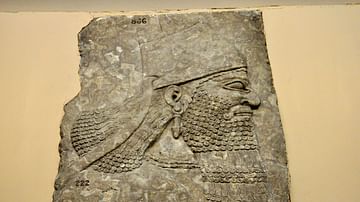
Image
Head of Ashurnasirpal II
A fragment from a wall relief that depicts the head of the Assyrian King Ashurnasirpal II. Neo-Assyrian era, 865-860 BCE. From the North-West palace at Nimrud (ancient Kalhu; Biblical calah), Mesopotamia, Iraq.(The British Museum, London).
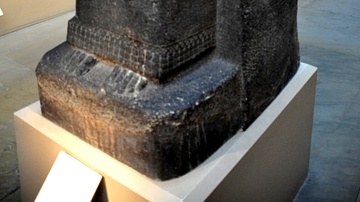
Image
Statue of the god Kidudu
The cuneiform inscriptions on this basalt statue mention that this is the god Kidudu, the guardian of the walls of Ashur city. It was erected by King Shalmaneser III. Neo-Assyrian era, 835 BCE. From Ashur, Mesopotamia, Iraq. (The British...
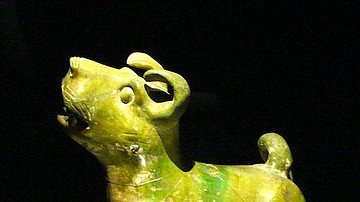
Image
Chinese Ceramic Dog
Green-glazed ceramic dog, Eastern Han Dynasty, 25-220 CE.
Palace Museum, Beijing, China.
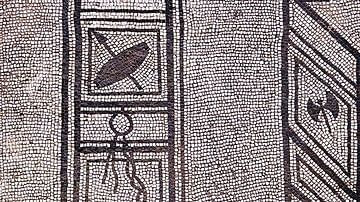
Image
Dog Mosaic
A floor mosaic from Pompeii depicting a guard dog. (1st century CE)
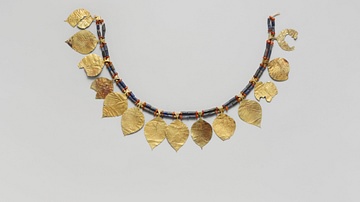
Image
Chaplet from Tomb at Ur
2900-2350 BCE. Chaplet that decorated the forehead of the one of the king's attendants, who would have been buried with the king. Found in cemetery at Ur by Sir Leonard Woolley, 1920-1930 CE. Metropolitan Museum of Art, New York
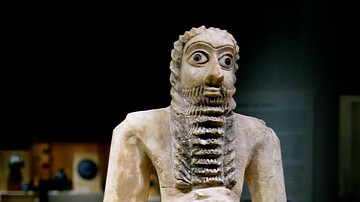
Image
Mesopotamian Male Worshiper Votive Figure
Mesopotamian male worshiper votive figure, from Eshnunna, Mesopotamia (modern-day Tell Asmar), 2750-2600 BCE.
Metropolitan Museum of Art, New York.
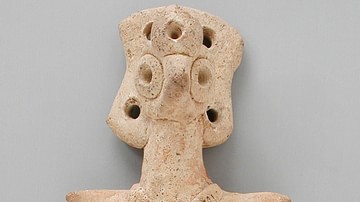
Image
Ishtar
Goddess Ishtar, Mesopotamia, Babylonian, c. 2000 BCE, Terracotta. The Phil Berg Collection, Los Angeles County Museum of Art (LACMA).

Image
Odysseus and the Sirens (NAM, Athens, 1130)
NAM, Athens, 1130. Late 6th century BCE. This lekythos (perfume vessel) depicts the story of Odyssey, 12, where Odysseus is tied to his ship's mast in order to hear the music of the sirens, but to be restrained from straying into their danger...
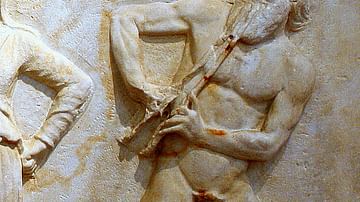
Image
Marsyas, detail from NAM, Athens, 215.
Detail of Marsyas from NAM, Athens, 215. The bearded satyr can be seen in a state of movement as he plays his auloi, the spread of his fingers is preserved by the left hand, and presumably corresponds to the finger-holes of the instrument